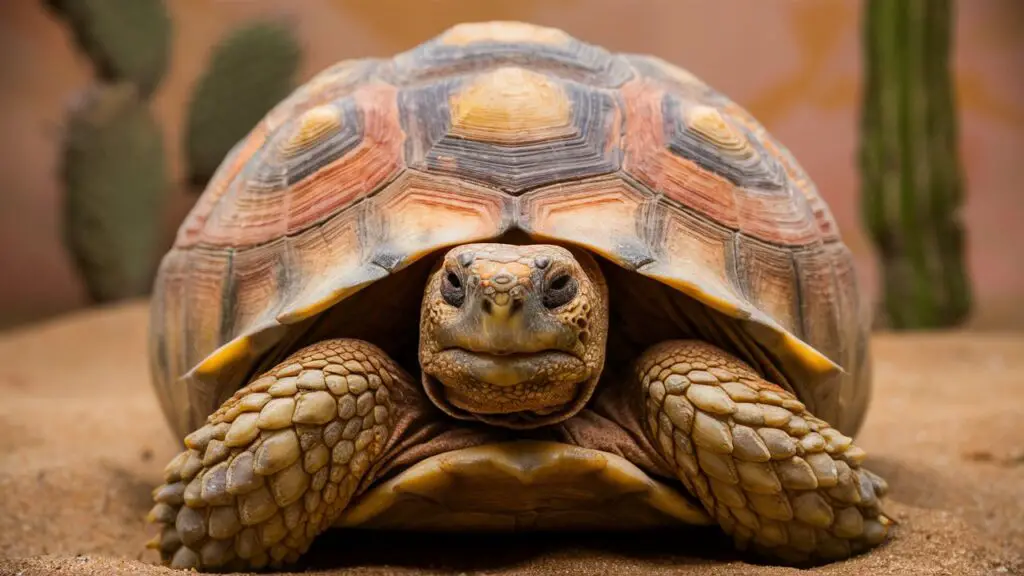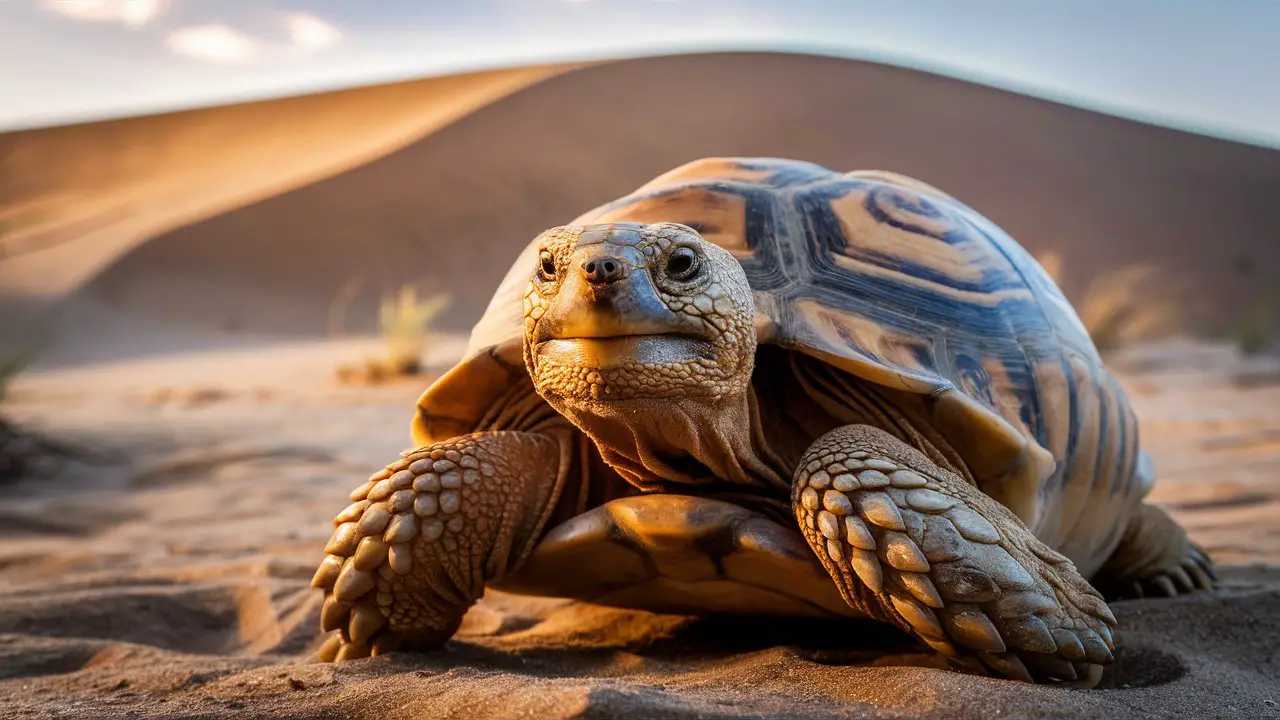As you explore the arid Mojave and Sonoran deserts of the American Southwest, you may encounter an iconic yet threatened resident – the desert tortoise. Measuring up to 15 inches long, this reptile has made its home in these harsh environments for thousands of years. However, in recent decades, its numbers have rapidly declined due to habitat loss, disease, and other human-related threats. In this article, you will learn about the natural history of the desert tortoise and the conservation efforts underway to ensure the continued survival of this species in its native desert habitats. Through increased awareness and protective measures, we can provide a more hopeful future for this ancient desert dweller.
An Introduction to the Desert Tortoise
Habitat and Range
The desert tortoise inhabits the Mojave and Sonoran deserts of the southwestern United States and northern Mexico. They can be found in desert grasslands and scrublands, as well as rocky foothills. The desert tortoise digs burrows to escape extreme heat in the summer and cold in the winter. They are most active in the spring and fall.
Physical Characteristics
The desert tortoise has a domed shell and stocky limbs. They grow up to 15 inches in length and weigh up to 15 pounds. The shell is brown and gray, helping them camouflage in the desert. Their skin is dry and scaly, and they have sturdy claws for burrowing. Desert tortoises can live 50-100 years.
Diet and Feeding
Desert tortoises are herbivores, feeding on a variety of desert plants such as grasses, cacti, and wildflowers. They also eat fruits, leaves, and seeds. The desert tortoise gets most of their water from the plants they eat but will also drink from seasonal rain pools and puddles. They are most active foraging in the early morning and late afternoon when temperatures are cooler.
Conservation Status
Due to habitat loss, poaching, and disease, the desert tortoise population has declined significantly. They are listed as threatened under the Endangered Species Act. Conservation efforts include protecting habitat, limiting vehicular access, and regulating collection and relocation of desert tortoises. Public education and involvement in conservation are also crucial to protecting this iconic desert species. With continued efforts, we can ensure the desert tortoise survives and thrives for generations to come.
The Desert Tortoise’s Native Habitat
The desert tortoise is native to the Mojave and Sonoran deserts of the southwestern United States and northwestern Mexico. ###The Mojave Desert The Mojave Desert spans California, Nevada, Utah, and Arizona. It is a dry, hot desert with sparse vegetation. The desert tortoise inhabits scrublands, washes, and canyon bottoms in the Mojave. They prefer areas with abundant low-growing plants so they can easily spot predators. Their burrows provide shelter during extreme weather.
The Sonoran Desert
The Sonoran Desert covers large parts of Arizona, California, and Mexico. Like the Mojave, it is an arid region with hot summers and mild winters. However, the Sonoran receives more rainfall, supporting denser vegetation. The desert tortoise inhabits rocky hillsides and bajadas with palo verde, mesquite, and cacti. They also use abandoned mammal burrows or construct their own burrows to escape extreme heat and cold.
The desert tortoise has adapted well to the harsh conditions of these deserts. However, habitat loss and fragmentation threaten populations. Development, mining, livestock grazing, and off-road vehicle use have degraded native desert habitats. Protecting remaining habitat, limiting disturbances, and restoring damaged areas are key to ensuring the long term survival of the desert tortoise in its native Mojave and Sonoran home.
With the right conservation efforts, these deserts can remain the ideal habitat for the desert tortoise and other native wildlife adapted to its challenges. Safeguarding this remarkable species and the ecosystems it inhabits is crucial to preserving the natural heritage of America’s desert southwest.
Threats Facing the Desert Tortoise
Habitat Destruction
The desert tortoise faces immense pressure as human activity encroaches upon its habitat. Development of land for residential and commercial purposes has destroyed and fragmented tortoise habitat. Road construction also poses a threat, as tortoises are often hit by vehicles while crossing roads. These impacts severely threaten the tortoise populations that remain in undeveloped areas.
Disease and Predation
Upper respiratory tract disease is a highly infectious disease that affects desert tortoises. It causes respiratory inflammation and can lead to secondary infections that may prove fatal. Predation also poses a significant threat, particularly to young tortoises. Common predators include coyotes, bobcats, and ravens. Although adult tortoises have few natural predators due to their protective shells, juveniles and hatchlings are vulnerable to attack.
Climate Change
Changes in climate such as increasing temperatures and alterations in rainfall patterns pose serious threats to the desert tortoise. Hotter temperatures may make parts of the desert inhospitable for tortoises, while changes in rainfall could reduce availability of forage plants that tortoises depend upon for food. Drought conditions lead to loss of vegetation, depriving tortoises of essential food and habitat. These impacts of climate change compound the threats from habitat destruction and disease, underscoring the precarious state of desert tortoise populations.
Urgent conservation actions must be taken to protect the desert tortoise from these existential threats. Safeguarding remaining habitat, controlling disease, limiting predation, and mitigating the effects of climate change are critical to ensuring the long term survival of this threatened native species in the deserts of the southwestern United States. Protecting the desert tortoise means protecting the fragile desert ecosystems on which it depends.
Conservation Efforts to Save the Desert Tortoise
Protecting Habitat
The protection and management of habitat is crucial to stabilizing desert tortoise populations. In the early 1900s, desert tortoises occupied more than 100 million acres of habitat across the southwestern United States and northern Mexico. Today, the species occupies just half of its historic range. Protecting existing habitat from development and damage is key. Efforts like designating protected critical habitat, restricting off-road vehicle use, and limiting livestock grazing have helped curb habitat loss and degradation.
Regulating Collection and Trade
The desert tortoise was once extensively collected as a pet, with more than 100,000 individuals harvested from the wild between 1939 and 1989. To curb overcollection, the desert tortoise was listed as threatened under the Endangered Species Act in 1990, making it illegal to collect or harm the reptiles. The listing also banned the commercial trade of desert tortoises across state lines and international borders. These trade regulations have allowed wild populations to start recovering in some areas.
Augmenting Wild Populations
Captive breeding and reintroduction programs are helping boost depleted wild populations. Desert tortoise hatchlings and juveniles from conservation centers are strategically released into protected habitat to augment small, isolated populations. Headstarting programs, where hatchlings are reared in captivity for several months before being released into the wild, have been shown to increase survival rates. These population augmentation efforts are still relatively new but show promise for reviving populations on the brink of local extinction.###
Educating the Public
Informing the public about the desert tortoise’s threatened status and educating people on how they can help with conservation efforts is key. Interpretive signs at desert recreation sites teach visitors about the ecological importance of the species and how to avoid harming tortoises and their habitat. Conservation organizations also give educational talks and distribute informative materials to raise awareness. Public education and outreach inspire people to make small changes that collectively benefit desert tortoise recovery.
The desert tortoise remains an ecologically important species, despite its threatened status. Ongoing conservation efforts aim to reverse population declines and set the stage for eventual recovery. Protecting and restoring habitat, regulating collection and trade, augmenting wild populations, and educating the public are all helping give this iconic desert dweller a fighting chance at long term survival.

How You Can Help Protect the Desert Tortoise
As a threatened species, the desert tortoise needs help from concerned citizens and conservationists. There are several actions you can take to aid in protecting these gentle reptiles and preserving their habitat.
Reduce Pollution and Waste
Pollution and waste negatively impact desert tortoise populations. You can help by properly disposing of trash, especially plastics and toxins; using reusable bags; and minimizing single-use items. When off-roading, stay on designated trails to avoid crushing tortoise burrows and compacting soil. Properly maintain vehicles to prevent leaks and spills.
Conserve Water
The desert tortoise relies on plants for food and shelter, so conserving water is critical. Take shorter showers, turn off faucets when not in use, and use water efficient appliances. Consider replacing thirsty lawns with desert landscaping featuring native, drought-tolerant plants. This provides habitat for tortoises and other wildlife.
Avoid Disturbing Tortoises
If you encounter a desert tortoise in the wild, observe it from a distance. Do not touch, harass or collect the tortoise, as this is illegal and can stress the animal. Keep pets on leashes and do not allow them to chase or harass tortoises. Photograph tortoises only if necessary and from a respectful distance using a zoom lens.
Support Conservation Organizations
There are many organizations working to protect desert tortoises and their habitat. Donate or volunteer your time with groups like the Desert Tortoise Council, Defenders of Wildlife, and Center for Biological Diversity. Write to your political representatives and ask them to fund conservation efforts and strengthen protections for threatened and endangered species.
Together, we can make a difference through compassion and action. Do your part to ensure this vulnerable reptile continues to thrive for generations to come. Every small act of conservation matters in the fight to protect our planet’s precious biodiversity. The desert tortoise and other wildlife will thank you for it.
Conclusion
As a resident of the desert southwest, you have a unique opportunity to aid in the conservation of an iconic native species, the desert tortoise. Through education, advocacy, and action, you can help ensure the survival of these gentle giants. When you tread lightly, dispose of trash responsibly, and speak up for habitat protections, you make a real difference. The desert tortoise depends on all of us to be stewards of the land. We must cherish these ancient creatures not only for their intrinsic worth, but for the health of the fragile desert ecosystems we all call home. With care and compassion, our generation can be the one to lift the tortoise back from the brink. The next chapter of this ancient species’ story remains unwritten, and we hold the pen. What will you write?
Don’t Miss a Thing! Enhance Your Wildlife Photography with Ultra-X Night Vision Goggles.
GET NOW!






